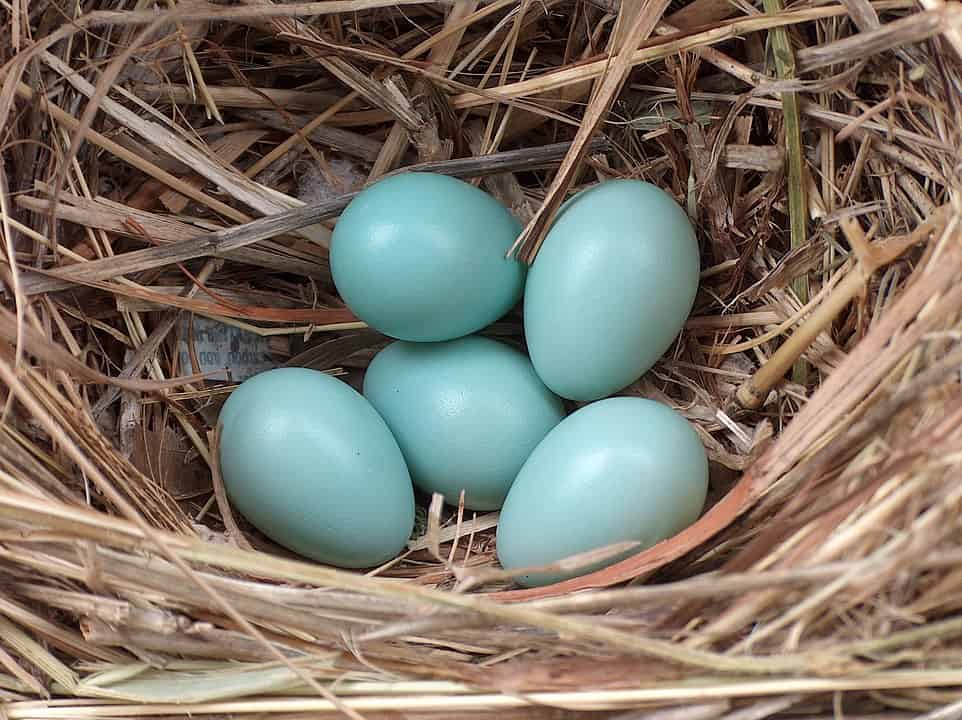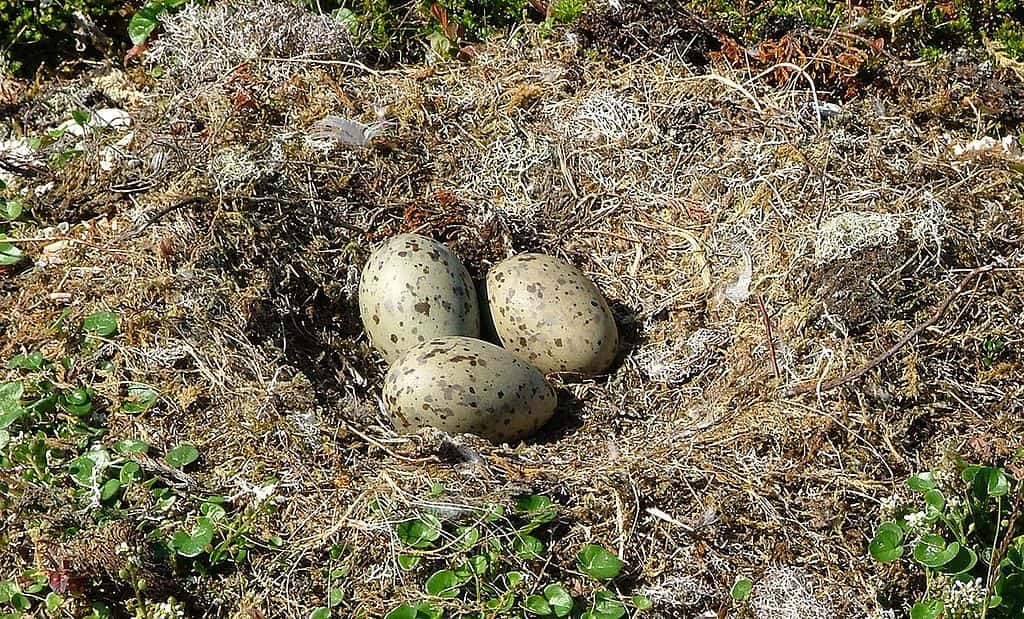The average clutch is determined by evolution, allowing each female within a species to maximize reproduction.
Average Clutch Size Meaning
The term “average clutch size” refers to the number of eggs laid in one brood. This term typically refers to nesting birds but can sometimes describe the number of eggs from amphibians and reptiles. The average clutch is determined by evolution, allowing each female within a species to maximize reproduction. Many birds have conservative egg-laying numbers per brood, but it is designed this way to help the mother rear the chicks, get through the winter, and lay more successful broods.

The term “average clutch size” refers to the number of eggs laid in one brood. This term typically refers to nesting birds but can sometimes describe the number of eggs from amphibians and reptiles.
©CC BY-SA 3.0 – License
Variations in Size
The average clutch size can greatly differ between species. And can sometimes even differ within the same species if they live in different environments, such as subspecies. Many factors can determine a clutch size, including the female’s health, the male’s ability to provide food, and predation. Species with shorter lifespans tend to lay more eggs in a clutch than those with longer lifespans, such as eagles which only lay one to two eggs on average. Some birds who have their eggs destroyed through predation or human intervention for breeding purposes will produce a double-clutch, where the female lays another set.
Many questions can be asked about why clutch sizes vary so much within bird species. But the answer is simple. Birds lay a specified amount of eggs needed to maximize reproduction. And the amount differs for each bird.
Birds like albatrosses and petrels lay one egg, vultures lay one to two, gulls lay two to three, shorebirds lay three to four, songbirds lay two to five, ducks lay seven to 12, and pheasants lay eight to 18.
Clutch sizes differ drastically within taxonomic groups but also within the same species. For instance, some thrushes lay more eggs in the northern portion of their range compared to the southern portion. And older females lay less than younger females. So, as you can see, the average clutch size is only an estimate and changes based on many factors.
There have even been much-heated debates about how latitude is directly linked to clutch size. The theory is that clutch size increases as latitude increases.

Clutch sizes differ drastically within taxonomic groups but also within the same species. For instance, some thrushes lay more eggs in the northern portion of their range compared to the southern portion.
©CC BY-SA 3.0 – License
What Can Affect the Average Avian Clutch Size?
The female’s ability to lay eggs is only the first of many hurdles. If it lays too many, it may not be able to incubate them all or care for them all, especially during the winter.
Here are some more things that affect the average clutch size.
Food Availability
Clutch size is directly related to resource abundance. High-latitude areas with an abundance of food during spring and summer allow for bigger clutch sizes. Nonseasonal areas, like tropical rainforests, tend to have smaller clutches because the food availability does not change. Raising a larger brood is possible when there is an increase in food during the breeding season. Many avian tests have been recorded over the years, and the latitude theory seems to ring true, at least within the confines of these experiments. Birds in the wet tropics laid an average of two to three eggs per brood, but temperate and Arctic regions saw an average between four and six.
Nest Predation
Similar to food limitation, nest predation is more common in areas near the equator, versus near the poles. With higher rates of predation in tropical areas, smaller clutches reduce the parent birds’ investment in one brood. Bigger clutches can also be more easily spotted by predators, greatly increasing the chances of losing one or more eggs.

Birds that nest in open cups or scrapes in the ground produce fewer eggs than those who place their clutch in an enclosed area, like a tree cavity.
©CC BY-SA 3.0 – License
Seasonality
Seasonality increases with latitude, and the average clutch size increases in environments closer to the poles. Along with a food abundance during the reproductive season, there is also an increase in parental mortality. They are forced to survive periods of low temperatures and risk their lives with migration. These two instances combined have caused the evolution of larger clutches in areas with greater seasonality.
Nest Type
The type of nests the eggs are placed in is a strong determiner of the average clutch size. Birds that nest in open cups or scrapes in the ground produce fewer eggs than those who place their clutch in an enclosed area, like a tree cavity. Those out in the open are more susceptible to predators. But it’s also thought that excavators, like woodpeckers, put more effort into building their nests and, therefore, their nesting opportunities are more limited, so they produce more eggs at one time. Their larger clutch size could also be due to their stable and more specialized diet that’s stable during the changing seasons.




